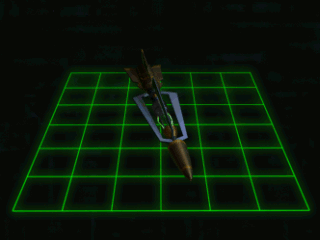GTM TAG-C
From FreeSpace Wiki
GTI TAG-C Missile

|
|---|
| The GTI TAG-C Missile |
Tech Room Data
The TAG-C is the third and final generation of TAG missiles developed by the GTI labs. This model provides greater reliability and compatibility with existing GTA turret hardware. Although these missiles are extremely scarce, tagging a target with one results in a devastating barrage from local friendly artillery. TAG-Cs have thus far been restricted to elite squadron use only.
Performance
Statistics
| Range | 2 665 m | |
| Reload time | 8.0 s | |
| Velocity | 205 ms-1 | |
| Base Damage | 1 | |
| Armor Damage | Full | 1 |
| Shield Damage | Full | 1 |
| Subsystem Damage | Full | 1 |
| Shockwave Radius | 10 / 30 m | |
| Type: | Aspect Seeking | |
| View Cone: | N / A | |
| Minimum Lock Time: | 2.5 s | |
| Turn Rate (360 degrees): | 1.75 s | |
Notes
- TAGs the target (level-3). Effect lasts for 10 s
- War in Heaven uses TAG-C missiles as the SSM trigger to great effect.
Veteran Comments
Please read the Veteran Comments policy before editing this section.
Never actually used in the game, and incompatible with all GTVA fightercraft unless table alterations are made, the TAG-C looks to be a leftover vestige of something else. When the table alterations are made, it functions a lot like the GTM TAG-B missile.